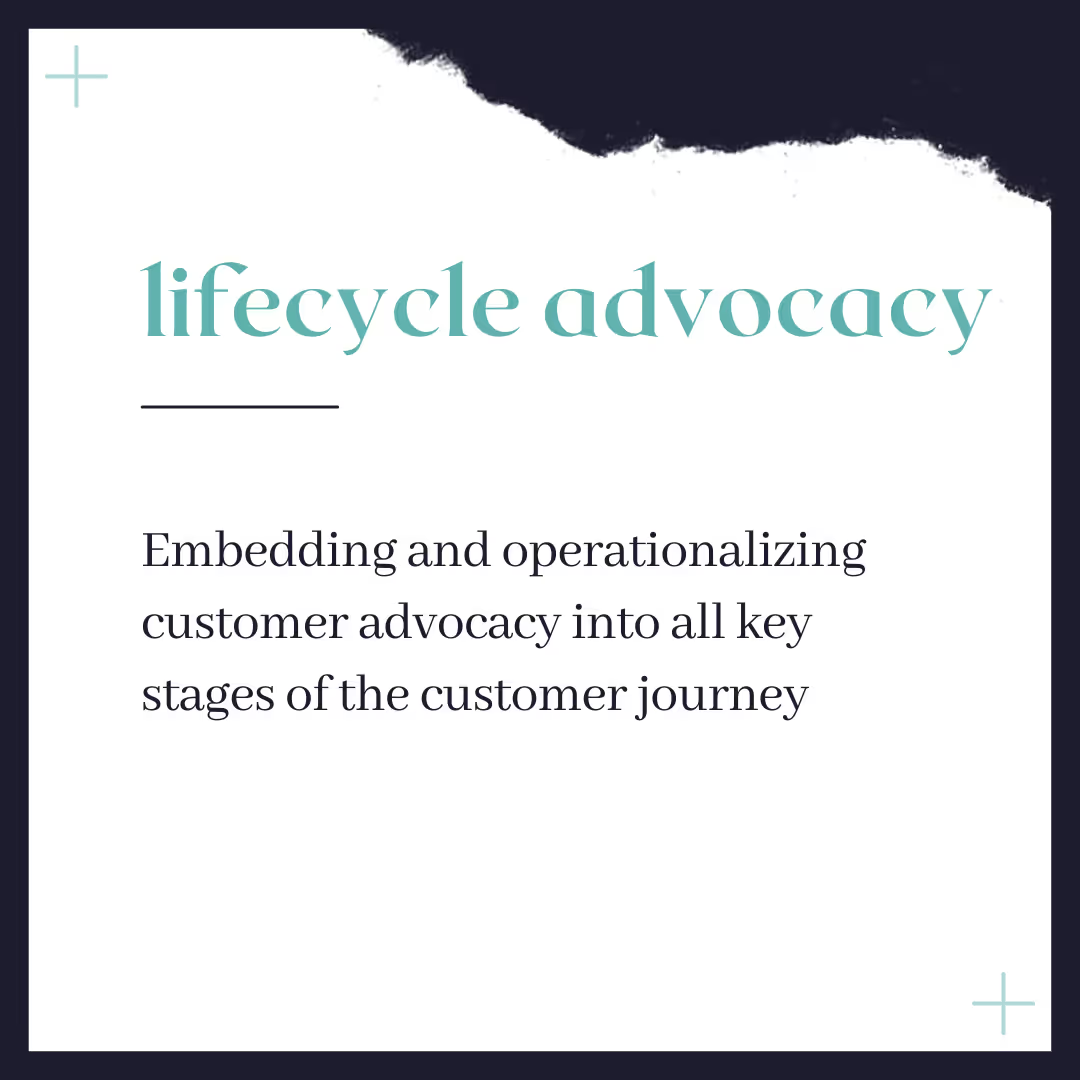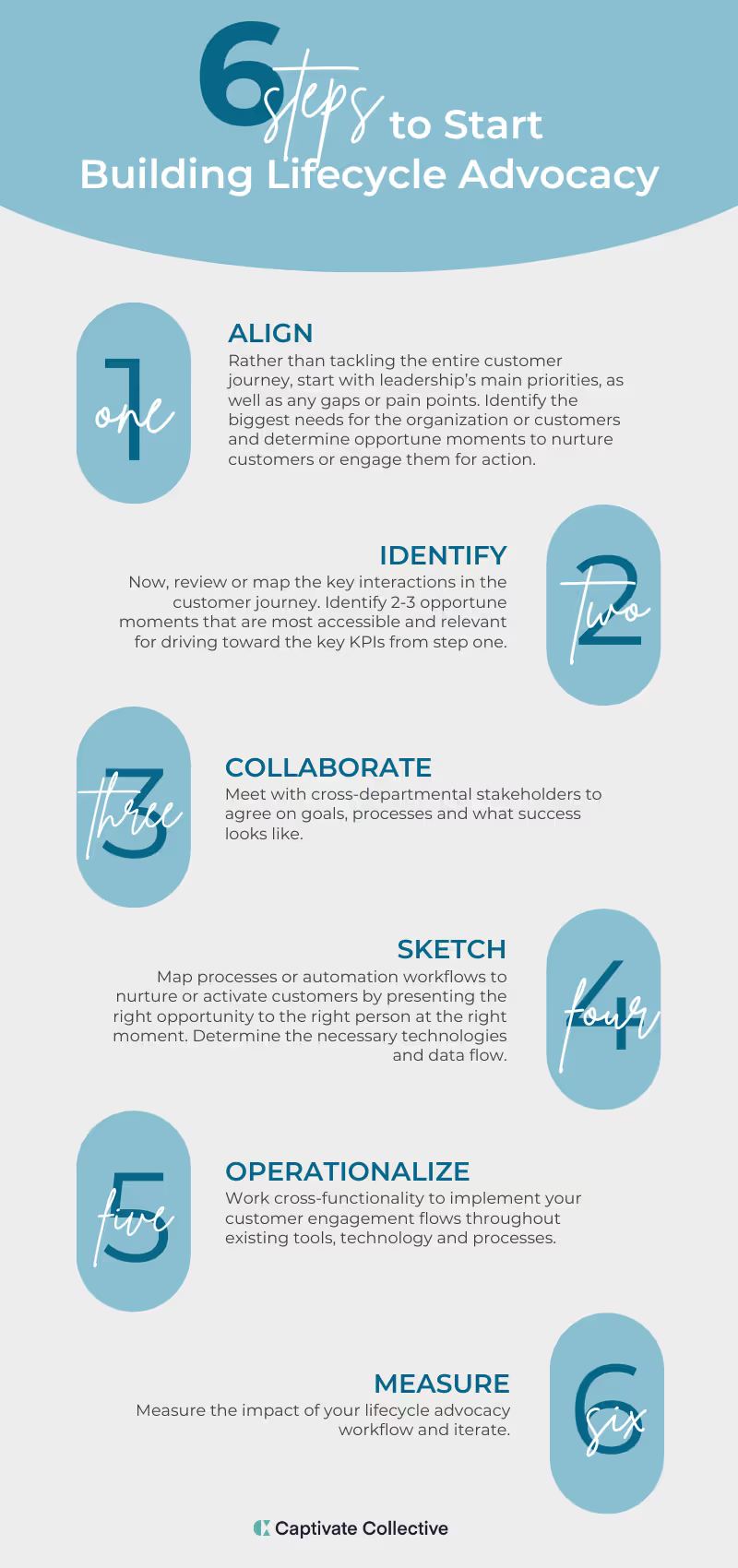“It’s time for some transformational change in B2B customer advocacy practice.” ~ Me
Why Traditional Advocacy Programming Isn’t Enough
In a recent blog post by FeverBee, Rich Millington describes the arrival of the Community Everywhere era, marked by the decline of defined community destinations and the emergence of a “fuzzy mesh” of community engagement that is no longer easily defined.
Over the last decade, we in the field of customer marketing and advocacy have seen B2B advocacy mature from one-size-fits-all novelty initiatives to a candy store full of engagement programs for customers to choose from, such as advocate communities, CABs, executive engagement programs, review campaigns, and referral and reference programs.
This expansion of options has enticed customers to build deeper ties to brands through more personalized benefits and targeted opportunities. That’s a good thing.
But as more and more B2B organizations adopt these programs and the mystery and freshness begins to fade, program managers find themselves playing an intense, repetitive round of engagement pickleball with the most enthusiastic 10% of their fan base.
Just like with the more mature community practice, we are feeling the limitations of advocacy destinations and branded programs. While these programs continue to play an important role, it’s time to think beyond advocacy programming to the era of Advocacy Everywhere.
(Hmmm…that actually sounds familiar)

The Next Layer of Advocacy Strategy
In 2021, Deena Zenyk and I introduced the concept of a new, additive approach to customer engagement and advocacy strategy we called Advocacy 2.0 or Ungated Advocacy (check out this webinar with Base or our keynote for CustomerXCon).
Through continued work with a diverse range of B2B brands, we’ve gotten the opportunity to further define our understanding of the advocacy ecosystem into three key layers.

In traditional advocacy practice (ie. the past 10 years), organizations have been heavily focused on #1 and #3.
- Identification & Discovery - Using data points collected through automation (or manually), the foundational layer of an advocacy practice is the ability to identify which customers are ideal collaborators and when is the opportune time to engage them. Beyond that, and equally important, is the practice of collecting key data points for further discovery of the customer’s preferences, needs and intrinsic and extrinsic motivators to further personalize the value proposition of continued engagement. Currently, this is still a rather basic practice, with many organizations relying on NPS data or 1:1 advocate identification.
- Advocacy Programming - In the traditional B2B customer advocacy methodology to date, identification and discovery would lead to inviting customers into the advocacy programming most aligned to their desires and collaboration potential. These programs afford the organization a valuable arena to nurture and grow the customer relationship and, when appropriate, activate customers through scalable campaigns or one-to-one “asks”.
As advocacy programming becomes less novel, the limitations of this one-two approach are becoming more evident.
Advocacy programs primarily attract and serve a small percentage of highly engaged and successful clients. Programs are often membership-based and require time and attention commitments, asking the member to interact in a separate destination outside their day-to-day online environments.
And maybe most importantly, these programs have their own advocate journey - sometimes including levels, badges, rewards and more - completely separate from their customer journey. The advocacy program experience is rarely in step with onboarding, adoption, renewal, and expansion goals, or how the customer is interacting with different teams across the organization.
How do we build an advocacy strategy that engages customers where they are - both in their day-to-day as an individual (whether online or in-person) and in their journey as a customer of your brand?
Lifecycle advocacy is the third layer of the advocacy ecosystem and the intersection of Customer Advocacy and Customer Marketing practices.
It allows you to systematically build loyalty and advocacy in natural tandem to the customer journey, meeting customers where they are rather than siloing their advocacy journey within the confines of membership-based programs.

The Big Wins of Lifecycle Advocacy
Why should lifecycle advocacy be the next iteration of the B2B advocacy practice?
- Reach: Advocacy programming does an amazing job engaging your customers - the small fraction of your most engaged customers that is. Advocacy professionals are constantly feeling the pressure of finding more customers to advocate for their brand, but not every customer is interested in becoming a program member (or even the right fit). Embedding point-in-time nurture and activation allows you to engage a much broader segment of your customer base.
- Scale: Embedding and automating advocacy motions into the existing customer experience allows you to grow the amount of customer advocacy you generate with less manual effort. Advocacy professionals are constantly working to source customers. Lifecycle advocacy creates a constantly flowing stream of fresh advocate engagement.
- Relevancy: The era of the siloed experience is rapidly fading. As consumers, we expect vendors to integrate into our experience, not the other way around. Lifecycle advocacy tears down the artificial wall between customer journey and customer advocacy, offering customers the right opportunity, in the right channel, at the right time.
So Why Haven’t More Organizations Implemented Lifecycle Advocacy?
There’s a reason why we haven’t seen a great deal of adoption since we introduced the initial concepts now defined as lifecycle advocacy: it’s hard.
Bringing advocacy engagement workflows to life requires a level of systems and team alignment that hasn’t been demanded of customer marketing or advocacy functions before.
- Cross-functional buy-in: No one department owns the entirety of the customer journey, which means you’ll have to pitch the vision and value of your work to cross-functional leaders and team members.
- Cross-functional collaboration: You won’t be able to build in a vacuum - your ideas must be based on input from those who know your customers and their pain points best. You’ll need to collaborate with stakeholders, such as sales, support, adoption, renewal, expansion, and product.
- Cross-functional systems: Perhaps the most difficult challenge we are facing as practitioners is building within and connecting to the processes and software already supporting your customer experience. Dedicated tools for Advocacy Programming made launching initiatives for your most engaged customers fairly easy. With lifecycle advocacy, you are aiming to engage a broader range of customers, meeting them where they are already interacting. This means your “advostack” is getting bigger, incorporating more tools your colleagues use to interact with customers.
Lifecycle advocacy in action
Despite challenges, it’s exciting to see organizations take steps in implementing this approach. Here are just a few examples of what lifecycle advocacy can look like in practice.
🎉 Renewal Celebration: One of the biggest misses by organizations is the lack of, well…anything really happening at the point of renewal. Typically, there’s some negotiation back and forth, papers are signed and then we all go on our merry way, even though the customer has just undertaken the biggest act of advocacy there is - renewal! What an underutilized, opportune moment to build rapport and garner more advocacy!
Consider a scenario where this opportunity is closed-won in your CRM system and key account contacts are sent an “anniversary” card and link to claim a gift (a great example of “surprise and “delight”). This is also an opportune moment to ask if this client would be willing to be a reference, inserting both nurture and activation. This can be completely automated for scale or implemented as process play with the Customer Success or Customer Marketing team.
⤴️ Driving Reviews: Many teams strive to develop a constant stream of reviews instead of relying on point-in-time campaigns. The team at Gong has automated this process by tapping into product engagement metrics and sentiment evaluation. Designated contact roles as marked in SFDC who hit product visit goals within a specified timeframe (tracked through Gainsight) are instantly sent an NPS survey through Delighted. If the ranking is within the positive sentiment range, they are taken to a landing page where they are asked to write a G2 review at that opportune moment.
👩 💻 Customer Experience: Beyond garnering advocacy, lifecycle advocacy brings together the advocacy journey and the customer journey. At my last organization, I wanted to ensure that members of one of my advocacy programs, a Customer Council, had a heightened experience in their day-to-day interactions with our organization. With some willing collaboration from the head of customer support, we orchestrated a simple heightened experience. When a member of the Customer Council reached out to support, it triggered an alert to the customer support specialist who was given guidance of a templated message to begin the initial response with: “I see that you’re a member of our Customer Council. I first want to thank you for your work in helping us continue to improve as an organization.”
🌏 Account Expansion: We can also flip the idea of lifecycle advocacy to uncover a new angle: leveraging advocates at key points of the customer journey. When the customer advocacy team at Alteryx noticed that accounts with advocates were growing at 10x and those accounts stayed with Alteryx 60% longer than the average customer, they realized they had been leveraging advocates as extensions of the GTM teams.
Alteryx have adopted a new process of identifying account advocates at the renewal and expansion stage, working in tandem with these advocates to deeper understand their organizations’ goals and leveraging them to improve their expansion approach. This has resulted in tangible wins and they continue to expand this lifecycle motion.
How to Get Started with Lifecycle Advocacy
We're always met with excitement and interest when we share our vision for lifecycle advocacy with our clients and peers. But how does a customer advocacy practice put lifecycle advocacy in motion?
Baby steps: Don't be daunted by the amount of data or process integration that lifecycle advocacy requires. Start small with these steps.

Have you already started designing and operationalizing lifecycle advocacy or are you ready to begin? Welcome to the frontier of B2B customer advocacy. We are excited to see you here.
